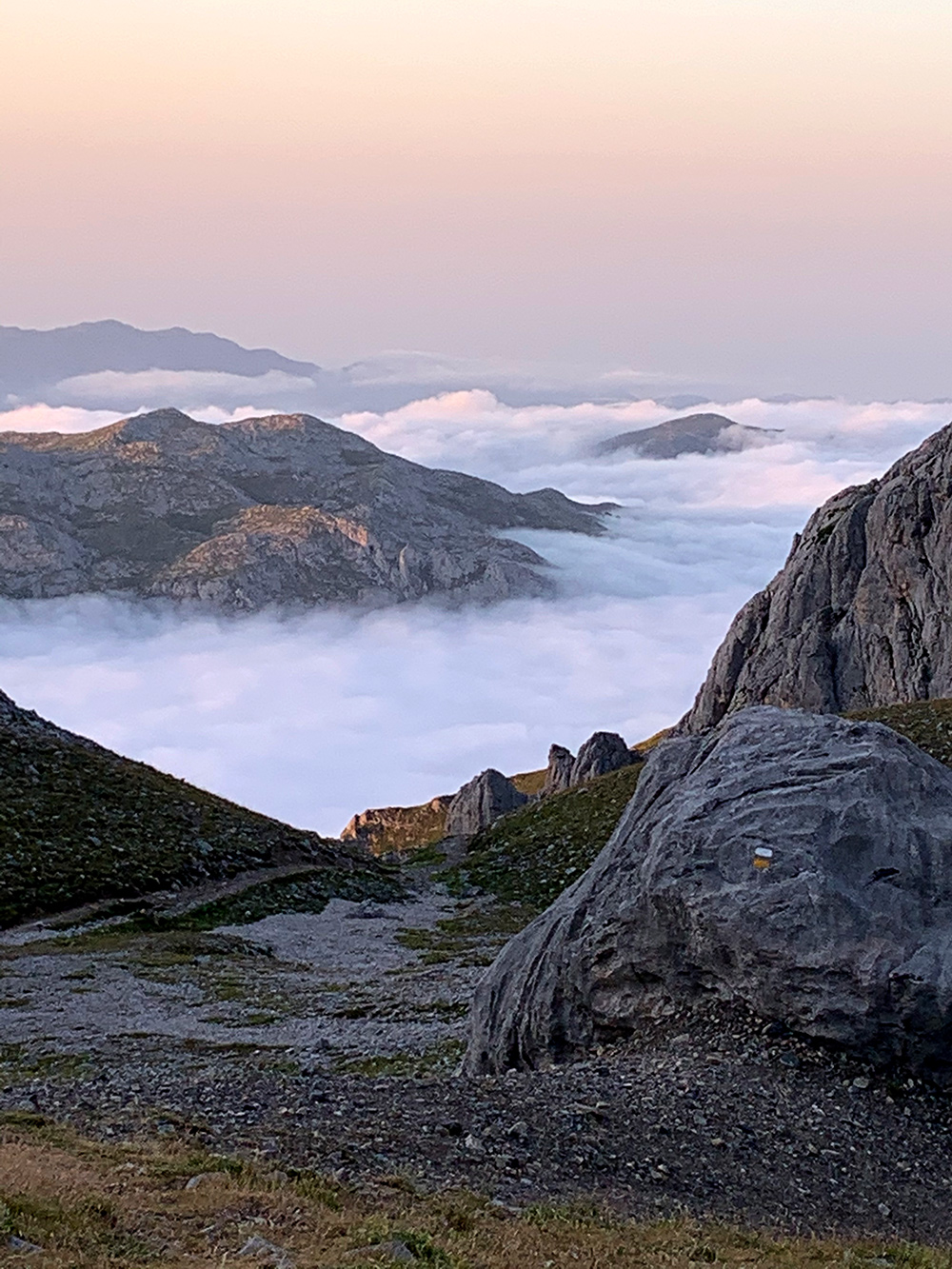
Mountain meadows in all shades of green with grazing semi-wild cows and horses and jagged mountain peaks as a backdrop. Narrow gorges where hardly any sunlight penetrates and no plants grow.
The Picos de Europa: a great Dorado of hiking with the magical feeling of walking in the clouds over the steep rocks for which the Picos are so famous.
The Picos de Europa were the first thing sailors saw from the sea when they returned from America. Although the mountains are not even that high, the range was an important landmark due to its location near the Atlantic Ocean. Until a few years ago, this was mainly a popular holiday destination for many Spaniards, but now the Picos have also been discovered by the Dutch. In July and August you can now hear Dutch all around you at the market in the mountain village of Potes. Fortunately, there are still quiet places where you can walk for hours without meeting anyone.
The mountain range consists of three mountain ranges:
- Andara; the eastern massif, the highest peak being the Torre Santa de Castilla (2596 meters)
- Urrieles; the central massif, the highest peak being the Torre de Cerredo (2648 meters)
- Cornion; the western massif, with the Morra de Lechugales (2444 meters)
The central and western massifs are separated from each other by the mile-deep gorge of the Cares River.
Limestone Rock
The rocks are almost all limestone and glacial forces have contributed to a notable area of alpine karst phenomena. The area is popular with climbers and mountain hikers. There is a network of well-maintained shelters. The most famous place to climb is Picu Urriellu or El Naranjo de Bulnes.
Lakes and Caves
Additionally, there are a number of mountain lakes, including the lakes of Covadonga.
The Picos de Europa are home to many of the deepest caves in Spain, including Torca del Cerro del Cuevon (−1589 m), Sistema del Trave (−1441 m) and Pozo Madejuno (−1255 m). New caves are still being discovered and caves are still being explored.
Sheperds
The Picos are home to a dwindling number of shepherds who migrate from the valleys to the mountains in summer with their sheep and goats. The area is also known for its spicy cheeses, such as Queso de Cabrales, which are traditionally aged in the caves.
Flora and Fauna
The most characteristic animal of the Picos de Europa is the Cantabrian chamois. In remote areas you will find brown bears and more wolves. The red-billed crow, buzzard eagle and griffon vulture are quite common. There are many protected animals, such as the lamb vulture, the capercaillie and the aforementioned brown bear.
In the area you can find several species of trees, such as beech and holm oak.